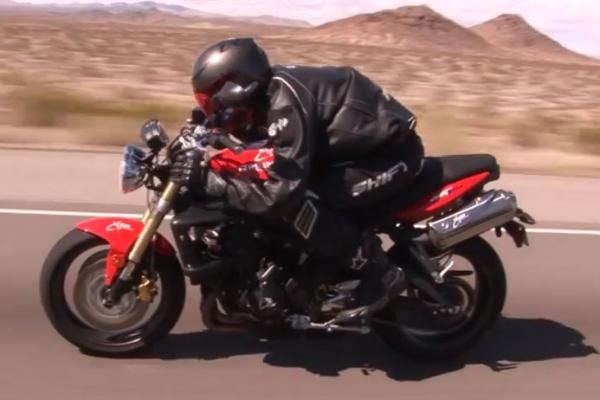Triumph tests rocket parts
Street Triple used to check reliability of spaceship components

NO, they're not testing bits from a Triumph Rocket III but from a real rocket. American independent space flight firm XCOR has actually been using a Street Triple to check the reliability of components it will eventually sent into space.
Looking for a way to test bearings for its rocket propellant piston pump – whatever one of those is – XCOR struck on the idea of building the bits into a Street Triple and riding it around Roswell, New Mexico.
Apparently the Street Triple's engine, once modified to accept the spaceship bearings, could be used to test them for hours on end by simply riding the bike.
XCOR's chief engineer, Dan DeLong, said: “We debated how best to put many hours of wear time on the critical bearing components of our rocket propellant piston pump, that are subject to significant wear and tear. This particular motorcycle, the Triumph Street Triple, develops about the same horsepower and has the same cylinder arrangement as the liquid oxygen and kerosene fuel pumps for the Lynx suborbital spacecraft. That makes it ideal for a long-life pump test platform. The bike is much less expensive to operate than the full up rocket pump test stand. We're adding hours of run time each ride, not just minutes.”
“We put twenty hours--the equivalent of 400 Lynx flights--on the rocket pump bearings by driving from Roswell to Mojave taking periodic data readings along the way to make sure things were in good condition. The trip was a great success and the bike performed flawlessly. Plus we got to drive through some of the most spectacular parts of the American Southwest.”
Chief Operating Officer, Andrew Nelson said: “This test would have cost us over $500 per minute had we operated it on a traditional pump test stand. The entire trip represented about half a million dollars in net savings in both time and money for the company. More importantly, it validated that our critical pump subassemblies will have the ultra-long life needed to meet the safety needs of our customers and a vehicle that is designed to fly thousands of times over many years. Oh, and everyone had a lot of fun along the way!”
Oh, and those bearings were OK, apparently. But it's a shame they couldn't have done it on a Rocket III.









